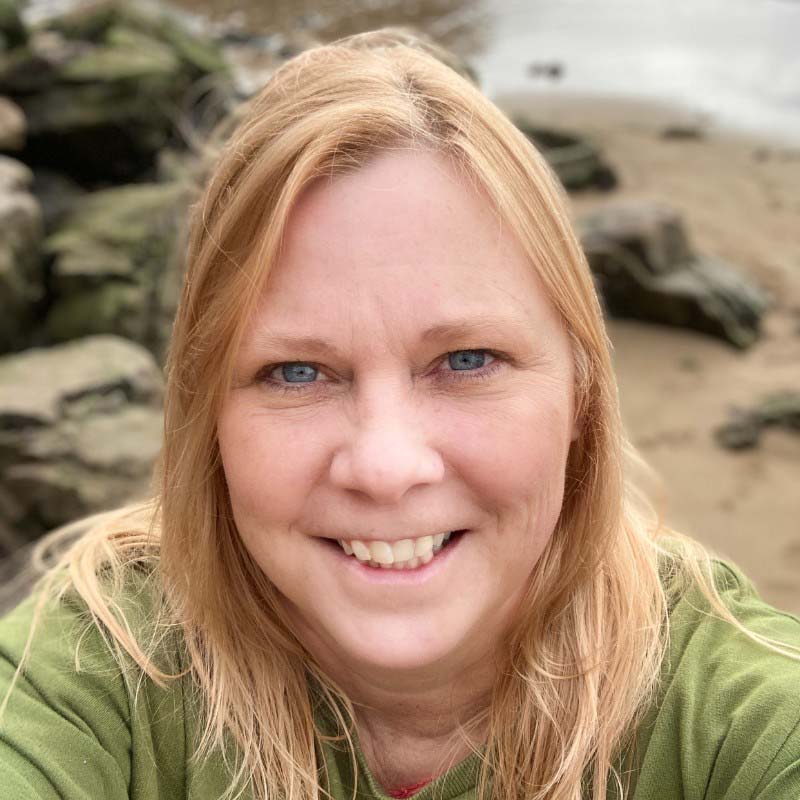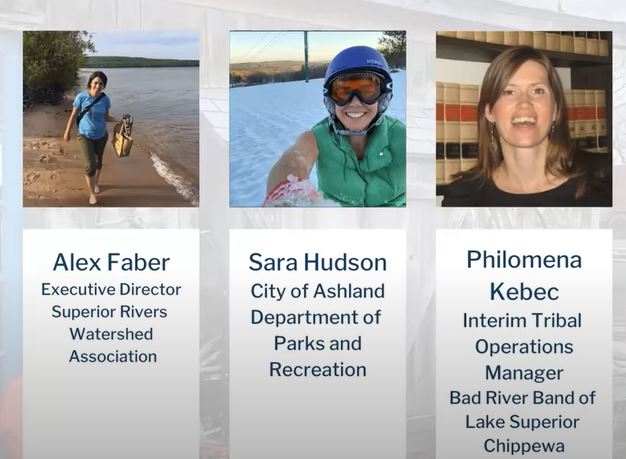Harmful Algae Blooms, FAQ
Algae is part of our life and the life of our waters. In general, algae are not harmful and are an important link in the food web. However, not all algae is helpful. When blooms become very large (then die and take up oxygen, resulting in low oxygen concentrations) or when they produce toxins, they are considered harmful. Harmful algae can be problematic for aquatic life, pets, and even people.
Harmful Algal Blooms are the rapid growth of algae or cyanobacteria that can cause harm to people, animals, or the local ecology (source: CDC https://www.cdc.gov/habs/index.html)
In Wisconsin, harmful algal blooms (HABs) are usually rapidly reproducing populations of blue-green algae, also known as cyanobacteria. Some cyanobacteria produce toxins that make people and pets ill.
Not all cyanobacteria produce toxins, and those that produce toxins do not produce them all the time. The term harmful algal bloom may also refer to blooms like red tides or large, non-toxic blooms that die and consume oxygen, resulting in “dead” zones.
WHEN IN DOUBT, BEST KEEP OUT. You can’t tell by sight alone. Toxins can persist in the water even after the bloom has visibly cleared up.
Cyanobacteria are naturally part of the ecosystems of our lakes, rivers, streams, and other water bodies. Though it is likely made worse by human pollution, blue-green algae is not initiated by human action. Cyanobacteria is native to our region, and is not considered an invasive species.
Cyanobacteria are true bacteria, but they function more like algae in aquatic ecosystems. Just like tomatoes are technically fruit, but you would never put it in a fruit salad, cyanobacteria are categorized will algae rather than bacteria. This is why we call it blue-green algae.
Contrary to popular belief, it is difficult to predict when and where blooms will emerge. Scientists are actively researching this field to improve forecasting.
We do know that certain factors increase the likelihood of a HAB developing. These include: warm temperatures, overabundance of nutrients like nitrogen and phosphorus, and light availability. Calm weather tends to encourage HAB growth, but wind can then blow the bloom around from one location to another.
In Wisconsin, they occur primarily mid-June to mid-September, when the weather is warm. But HABs can happen throughout the year – even under the ice!
Though we can’t remove all cyanobacteria from surface waters, there are steps we can take to address harmful algal blooms. This includes:
- using only phosphorus free fertilizer
- installing native plant rain gardens or shoreline plantings
- using soil health practices
- encouraging native aquatic plant growth
There is not yet a way to accurately forecast for HABs nor a ‘current conditions’ website or application. Please note that bloom conditions can change very rapidly, so “When in doubt, best keep out!”
- Satellite imagery for northeast Wisconsin, including Lake Winnebago, from the National Atmospheric and Oceanic Administration can found here: https://coastalscience.noaa.gov/science-areas/habs/hab-monitoring-system/cyanobacteria-algal-bloom-from-satellite-in-green-bay-and-lake-winnebago-wi/
- You can also check with your local health department for water quality advisories due to blue-green algae blooms.
- Many boaters and recreational groups advise one another about current conditions through email and social media posts.
We know that blooms in surface waters of northeast Wisconsin were recorded at least from the early 1900s. We also know that Wisconsin’s climate is becoming warmer and wetter. More precipitation can bring in excess nutrients, and the warmer weather has extended the growing season. These factors may contribute to more frequent and intense algal blooms, but research is ongoing.
- Avoid swimming in these conditions, there is a high risk of illness from swallowing or inhaling blue-green algae.
- Keep children and pets out of the water.
- Avoid boating, water skiing, or jet skiing through waters impacted by blue-green algae to avoid inhalation of water droplets.
- Shower after swimming in any body of water.
- Wash pets off before they can lick off algae.
- Talk with your neighbors to make sure they are aware of blue-green algae dangers.
- Remember, when in doubt, best keep out!
- Accidentally drinking water with a HAB present (children especially may accidentally swallow water while swimming)
- Drinking untreated water
- Being in the water with a harmful algal blooms
- Inhaling spray from water-related activities such as jet skiing or boating
- Inhaling spray when watering lawns with pond or lake water
- Some cyanobacteria toxins can accumulate in fish tissues. The World Health Organizations advises that fish taken from water with a HAB should be eaten only in moderation. Avoid eating the guts of these fish, and take care to not cut into organs when filleting the fish.
Please report blue-green algae blooms to DNRHABS@wisconsin.gov. Please include the location of the bloom, the name of the water body, nearest town, county, the size and duration of the bloom, and overall and close-up photographs for verification. The DNR is unable to test all reported blooms.
Please report illness related to HABs to the Wisconsin Department of Health Services by calling 608-266-1120 or filling out this online survey: Click here for survey.
You can also let Fox-Wolf Watershed Alliance know by emailing pictures and location information to info@fwwa.org. We appreciate the information and may include it in our outreach efforts and we can pass it along to our research partners. All information helps!
Symptoms may include:
- Headache
- Ear, nose, and/or throat irritation
- Skin irritation or rash
- Nausea, vomiting, and diarrhea
- Cardiac or respiratory failure (rare)
- Liver enlargement or failure (rare)
Info from Wisconsin Department of Health Services
If you suspect you’re experiencing symptoms from exposure to HABs, contact your doctor or the Poison Information Hotline at 800-222-1222 right away. Be sure to rinse off immediately after coming in contact with suspected HABs.
Animals should be rinsed immediately, monitored for signs of illness, and seek medical attention with your veterinarian if you think your pet is sick due to HAB exposure.
No, boiling water does not remove blue-green algal toxins.
- https://www.dhs.wisconsin.gov/publications/p0/p00853.pdf
- https://dnr.wisconsin.gov/topic/lakes/bluegreenalgae
- https://coastalscience.noaa.gov/science-areas/habs/hab-monitoring-system/cyanobacteria-algal-bloom-from-satellite-in-green-bay-and-lake-winnebago-wi/
- https://www.cdc.gov/habs/index.html
- https://uwosh.edu/sirt/wpl/




The post Harmful Algae Blooms, FAQ appeared first on Fox-Wolf Watershed Alliance.
Fox-Wolf Watershed Alliance
https://fwwa.org/2023/08/14/harmful-algae-blooms-faq/?utm_source=rss&utm_medium=rss&utm_campaign=harmful-algae-blooms-faq










![rsz_field_day_flyer[99]](https://fwwa.org/new/wp-content/uploads/2023/08/rsz_field_day_flyer99.jpg)





 Wolf’s Trash Free Waters program was on site providing program information to concert attendees and
Wolf’s Trash Free Waters program was on site providing program information to concert attendees and engaging local residents with “Cleanup Bingo”, where volunteers were given a reusable cleanup bingo card, trash grabbers, gloves, and a trash bag, and they set off to clean up litter in the park–hoping to get a “bingo” on their cards. Once they found a trash item from any horizontal, diagonal, or vertical line on the card, the volunteers returned to the Fox-Wolf booth to collect a prize item for their efforts. We had volunteers of all ages cleaning up at Leicht Memorial Park who removed over 12 pounds of trash from this public site.
engaging local residents with “Cleanup Bingo”, where volunteers were given a reusable cleanup bingo card, trash grabbers, gloves, and a trash bag, and they set off to clean up litter in the park–hoping to get a “bingo” on their cards. Once they found a trash item from any horizontal, diagonal, or vertical line on the card, the volunteers returned to the Fox-Wolf booth to collect a prize item for their efforts. We had volunteers of all ages cleaning up at Leicht Memorial Park who removed over 12 pounds of trash from this public site.

 kelly@fwwa.org
kelly@fwwa.org 920-915-1502
920-915-1502